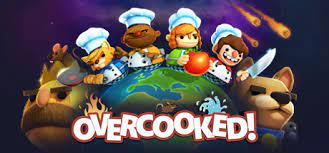Our team’s social mediation game is based on collecting certain sets of art pieces based on a pre-determined role, either by auctions or by trading with other players. However, some art pieces could be counterfeit (and would be valued less) based on connoisseur cards that each player has (and only that player knows). Some questions that our prototypes could help answer would be:
- Is this idea meant to be a collaborative or competitive social mediation game?
- This is important to answer as it drives a lot of mechanics on the valuation of various art pieces, and if we should shift the rules of the game from the current direction we are on. This is because if we introduce the game to players, and they just intuitively show each other their roles and knowledge, then maybe it would be better to pivot to a collaboration game. However, if the players intuitively never show their roles / knowledge, then it feels like the game should be competitive.
- To induce these scenarios, one prototype will be made such that players will know each others roles and try to get the highest valuation they can (as a group or as an individual). Another prototype will be made such that they don’t know each others roles and knowledge and they try to get the highest valuation as individuals. Then, we see which one players enjoy more.
- My prediction is that the competitive prototype will be more fun. The competitive game will have players interacting with each other more often, from trades to persuasion to arguments, which will cause players to be more engaged and have more fun with each other.
- Are we doing enough to keep people engaged with the premise of our game?
- This is important as we hope everyone has fun while playing our game, and we believe the premise of being art collectors competing or collaborating with each other to collect sets of art pieces has potential to be a social game that people turn to and play with their friends. Building the “magic circle” helps with engaging people to have fun with one another, and perhaps learn something about their peers in the process.
- We will play around with the role and connoisseur cards to allow players to choose how they want to play. In addition, we will also prototype the auction and trading mechanics, as this is how people will engage with other players. Questions such as “should the opening bid for auctions be created by players or preset?” or “should players be able to trade multiple times?” are things we need to prototype in the next few play testing sessions.
- My guess is that as long as the roles are at least relevant to art collectors / museums and are a little funny, they will keep people decently engaged. We will hopefully come up with at least one prototype of these roles / auction / trading mechanics that keeps players engaged as they would be able to have diverse strategies and interactions every game.
- Is the difficulty level balanced throughout the various roles and how much people know?
- This is important as it defines how satisfying the game will be at the end for players with different roles. If the game is too easy or too difficult, the players may become bored or discouraged to play again. This is especially true for our game as if we make one role too overpowered, they would win the game too easily and cause others to not want to play the game.
- To answer this, we should prototype with variations on different roles and connoisseur knowledge to see whether some knowledge is too strong and should be nerfed, or too weak and should be stronger.
- Because we don’t have our roles yet, I predict this process may be the hardest one to perfect, as it will take many play periods to understand the dynamics between various combination of roles. However, this will be fruitful as our game depends entirely on the social dynamics that are generated from the assigned roles and connoisseur knowledge of the players.


